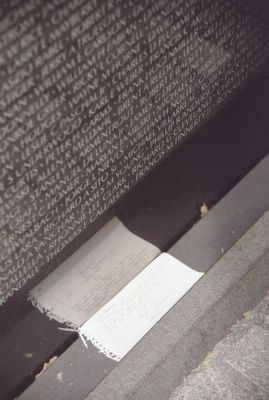Infrastructure and public safety once again come to the forefront with the collapse of the I5 Bridge in WA. It's looking like investigators are focusing on a truck that passed through the area shortly before the accident and whether it struck the overhead supports, knocking the span out of alignment. That would take quite a bit of force, unless other issues were at play (including corrosion and a lack of redundancy in structural support).
Time will tell what happened, but thankfully no one was killed in this collapse.
It's a reminder that we are spending far too little on maintaining and upgrading existing infrastructure. The amount we as a nation are spending on infrastructure
has fallen to levels not before seen as a percentage of GNP over the past twenty years after peaking during the Stimulus period. We are spending far less in both real dollars and as a percent of GNP than other developed countries,
despite critical areas that are not getting support.
Moreover, we're not getting out money's worth (bang for the buck) based on the costs compared to similar projects overseas. Two of the biggest projects are the East Side Access and 2d Avenue Subway lines. Both will improve access to NYC and reduce congestion by carrying hundreds of thousands of commuters each day, but
for the cost of the first segment of the 2d Avenue line, several countries in Europe have been able to build out entire subway lines. The NYC subway system is the oldest in the country and essentially operates 24/7/365 with no lines shut down overnight as some of its counterparts elsewhere do. That's beginning the change with the FasTrak service to get repairs done faster and cheaper, but trying to add capacity to an already built-out system in a densely populated area is costly.
Yet, there's room to grow. There's a proposal floating around to get the outer boroughs connected using underutilized rights of way that the MTA doesn't currently use. The Triboro TX would loop through Brooklyn, Queens and Bronx, and link up lines so that commuters don't have to cross into Manhattan to get to their destinations. It makes tremendous sense, and could relieve congestion through Manhattan and wouldn't cost nearly as much as a new subway through Manhattan, except that the MTA doesn't have room in its capital budget to do it - and the lack of political will to get it done either. NIMBYs have been trying to get some of that turned into park, rather than revert to subways that would increase property values of neighborhoods along the routes and prospective station locations. Turnover at the top of the MTA isn't helping either.
But it still comes back to costs for infrastructure. We want it. We need it. It's indispensable, and yet we refuse to pay for it and politicians aren't going to do anything when they can't do ribbon cuttings (so basic maintenance gets shafted).
But big projects like bridges, tunnels, subways, and mass transit are just the tip of the iceberg on infrastructure and public safety.
In light of the tornado that destroyed the town of Moore outside Oklahoma City, there are some calls to require construction of storm shelters and storm cellars in new buildings and retrofit existing structures.
The
Oklahoma Governor Mary Fallin is refusing to support a mandate that would require storm celler/shelter construction in new or existing structures. It's absolutely mind-boggling.
Despite the life-saving potential of personal storm shelters, the cost remains a deterrent. So, too, does a general resistance to government mandates in politically conservative states such as Oklahoma, where tornadoes are most prevalent. Even the director of an association of storm shelter manufacturers, based in Texas, is opposed to a storm shelter mandate for new homes.
"Any time a governmental entity says 'thou shalt' and tries to take an individual decision into the public domain, it's going to get pushback, and you're also going to raise the cost of things," said Ernst Kiesling, executive director of the National Storm Shelter Association and a retired civil engineering professor Texas Tech University.
The science of storm shelters has advanced considerably since Dorothy failed to make it to the tornado cellar at Aunty Em's Kansas farm in the 1938 movie the Wizard of Oz. Some shelters still are dug underground in the backyard. But they are increasingly made with specially fabricated concrete and steel doors to meet Federal Emergency Management Agency specifications. And they aren't necessarily underground. In some cases, closets or bathrooms are being fortified to double as "safe rooms" that can withstand furious winds even if the rest of the house is blown away.
In 2011, Oklahoma announced the SoonerSafe incentive program, offering federally financed rebates of up to $2,000 to residents who install storm shelters. The state uses a lottery-style drawing to select rebate winners from among the thousands of online applications. Sherry Wells said she won this year. She and her husband decided to get the biggest shelter available- a vault-like box with wooden benches - at a cost of $4,800. The project was so freshly finished that the Wells hadn't even submitted their rebate forms when the tornado hit on Monday.
"If it wasn't for the hand of God and the cellar, we wouldn't be here," Wells said as she sorted through the rubble of her home Thursday.
A little over 3,000 residential storm shelters are registered in Moore, a city of about 56,000, said community development director Elizabeth Jones.
Moore Mayor Glenn Lewis wants to propose a city ordinance requiring all new homes to have storm shelters. But realistically, he said, city officials may be able to require them only in new assisted living facilities and apartment complexes because of cost concerns. Contractors will be part of the conversation with the City Council to see whether a broader requirement is possible, Lewis said.
"We want to be competitive," he said. "We don't want to price them out of the market."
Asked at a news conference if a similar mandate might be considered statewide, Oklahoma Gov. Mary Fallin quickly shot down the suggestion.
Their primary concern is cost.
It would cost anywhere from $3,000 to $5,000 to integrate a storm room into a new build. That is the difference between life and death. In fact, one family who won a lottery to get a rebate for a storm shelter survived the Moore tornado just weeks after finishing the work but before they were able to submit the rebate paperwork.
That family is alive because of the storm shelter.
The cost definitely works in favor of installing and mandating the shelters, as compared to the funeral costs for those folks who were killed.
This isn't about a lack of money. It's about lacking the will to make it happen and adjusting priorities to focus on public safety and well being. The state of Oklahoma, along with the other Tornado Alley states have no statewide requirements for requiring storm shelters in new buildings, let alone retrofitting them into existing structures. The costs can be depreciated and spread out over the life of the structure, and moreover, the costs can be absorbed simply by
reducing the square footage of a private residence with the structure built in by 30-50 square feet.

